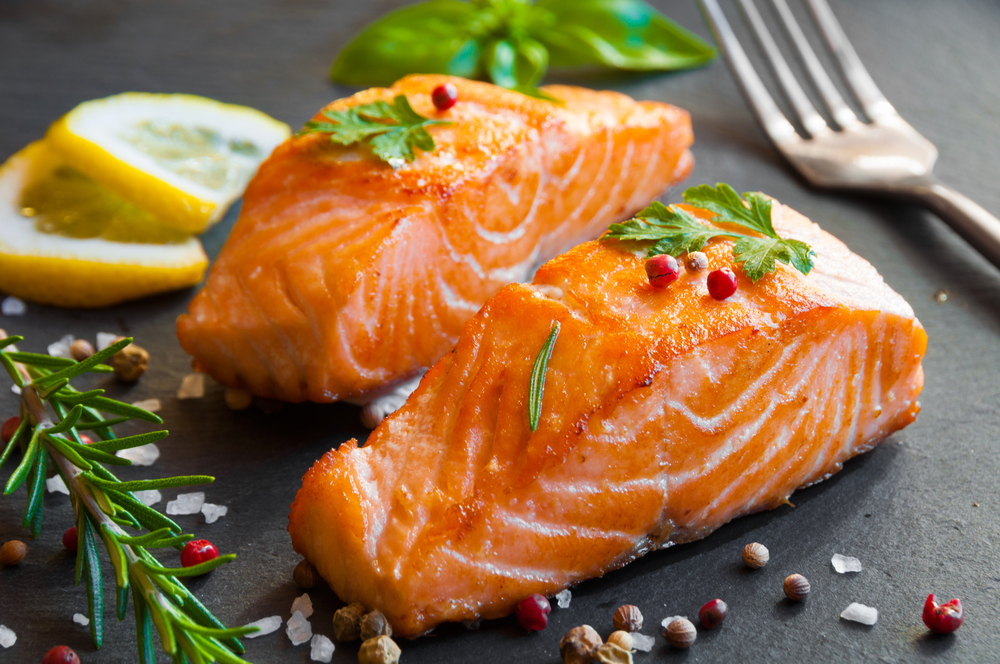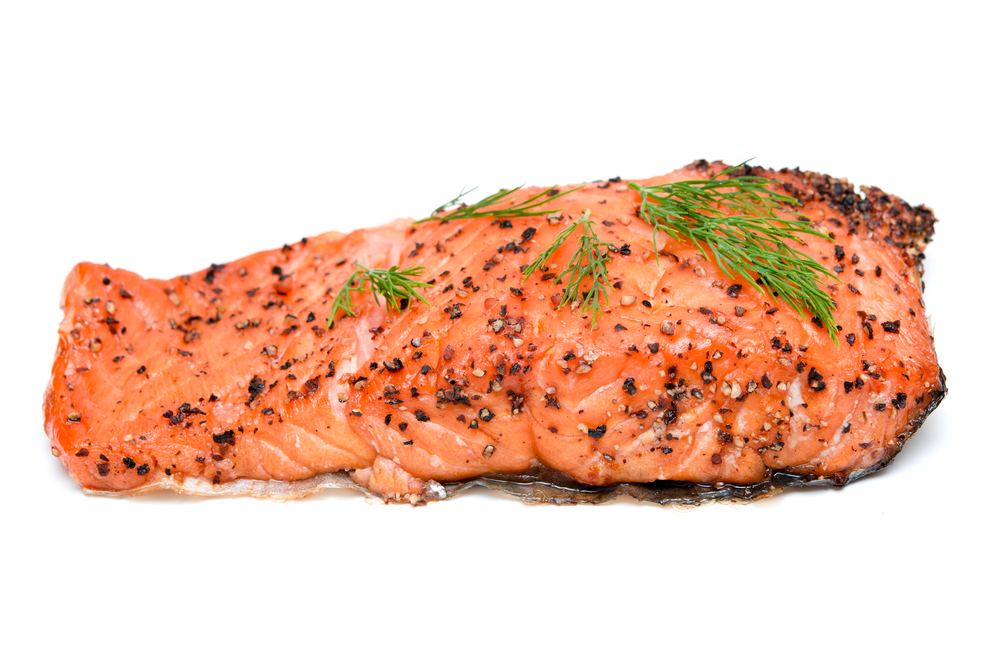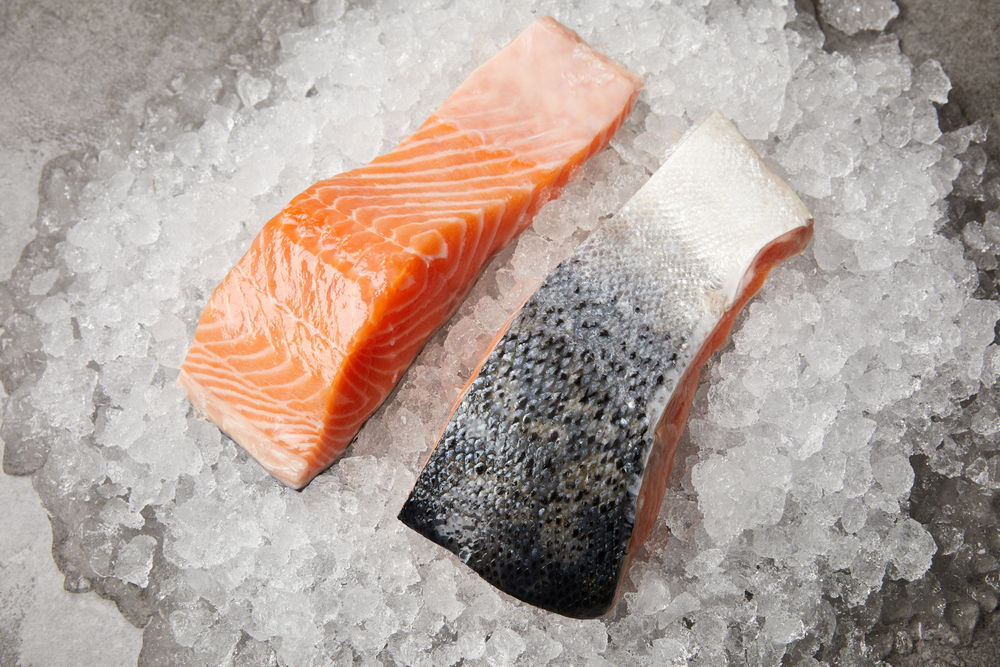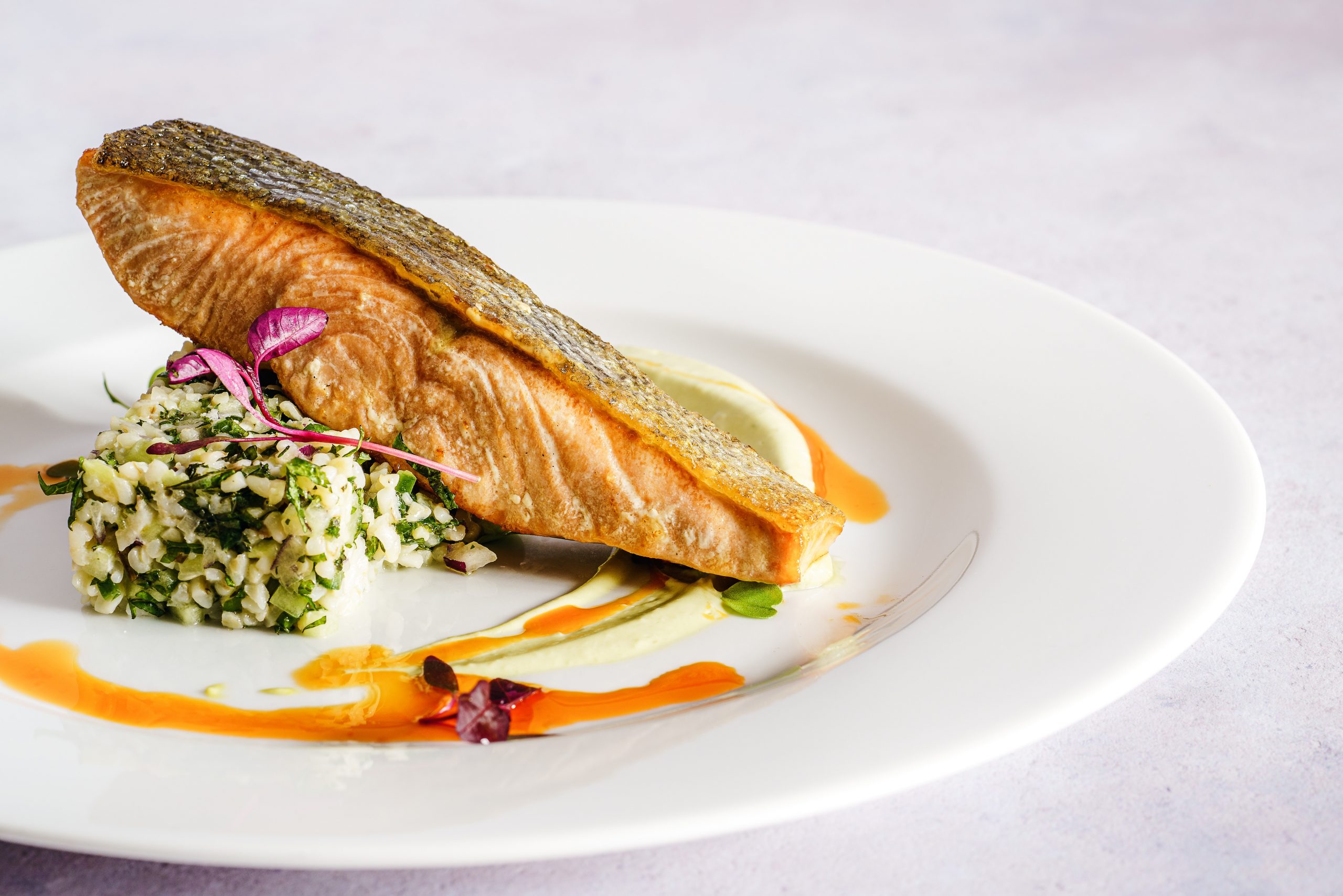Barracudas, known for their tenacity and size, are often caught by recreational fishers and occasionally appear on menus around the world.
Deciding whether they taste good or not might be subjective, but understanding more about their flavor and potential uses in the culinary world is imperative for an informed gastronomic experience.
One of the primary considerations while evaluating the palatability of barracuda is its texture and taste— it generally has a firm, white meat, which can be mild or strong in flavor depending on the size and region where it was caught.
In contrast to fish such as salmon, barracudas contain less oil content, which can affect their taste. Another factor to weigh before consuming them is the potential risk for ciguatera poisoning and mercury toxicity, which may make some individuals hesitant to eat barracuda meat.
Key Takeaways
- Barracuda has a firm texture and flavor varies depending on size and region.
- Lower oil content can make barracuda taste different from oilier fish like salmon.
- Consuming barracuda comes with potential risks, such as ciguatera poisoning and mercury toxicity.
Barracuda Overview

Barracuda are predatory fish that belong to the family Sphyraenidae. These swift and powerful hunters can be found in tropical waters around the world, where they are known for their aggressive behavior and exceptional speed.
One of the most well-known species is the Great Barracuda, which is often the subject of conversation when discussing the taste and culinary potential of this fish.
These amazing predators have a sleek, streamlined body shape that provides exceptional hydrodynamic advantages, allowing them to reach impressive speeds when chasing their prey.
Their strong, muscular bodies and sharp teeth enable them to efficiently catch and eat their prey, which mainly consists of smaller fish. This trait contributes to their overall taste, as the diet directly influences the flavor of their meat.
The behavior of barracuda can vary depending on factors such as their size or habitat. Smaller barracuda often hunt in schools, which could lead to the misconception that they display less aggressive behavior than their larger counterparts.
However, all barracuda are opportunistic predators, meaning they will not hesitate to strike when they spot an attractive prey. This behavior should be considered when evaluating their taste, as the natural predatory instincts can impact the quality of the meat.
The ecosystem within tropical waters offers an abundance of food sources for barracuda fish, making them a prevalent species in areas such as coral reefs and openings within seagrass beds.
Understanding the habitat of barracuda is crucial when considering the taste of the fish, as external environmental factors can play a role in the flavor of the meat.
Additionally, the location where the fish are caught and the methods used to catch them can also influence the overall taste and culinary potential of this fascinating predatory fish.
Understanding Barracuda Taste
Barracuda is a type of fish known for its elongated body, sharp teeth, and aggressive behavior. With its distinct characteristics, one might wonder how it fares as an edible fish. When it comes to taste, barracuda has a unique flavor and texture worth exploring.
This fish sports a lean, white meat that can be quite tender when cooked correctly. Its taste can be described as mild, with a slight sweetness, making it suitable for a variety of dishes.
The flavor of barracuda is generally not as fishy as some other popular fish, such as salmon or tuna, making it a good option for those who prefer a milder fish taste.
When comparing the texture of barracuda meat, it is firmer than most white fish. This firmness gives it a satisfying mouthfeel and allows it to hold up well in various cooking methods.
For instance, barracuda can be grilled, broiled, or pan-fried without falling apart, while still providing a delicate and flaky end result.
In terms of nutritional value, barracuda is a good source of protein, omega-3 fatty acids, and essential minerals such as iron and zinc. However, it is essential to note that some barracudas, especially larger ones, may have high levels of ciguatera toxin, which can cause food poisoning.
To prevent health risks, it is advisable to consume smaller barracudas and avoid eating their internal organs.
In conclusion, barracuda offers a unique taste and texture experience for those willing to try this versatile and nutritious fish. With its mildly sweet and not overly fishy flavor, combined with a firm yet delicate texture, barracuda can make a delicious addition to many seafood dishes.
Culinary Uses of Barracuda

Barracuda is a versatile fish that can be prepared in various ways to create delightful dishes. Its firm, white flesh has a mild flavor, making it a suitable choice for many recipes.
Grilling is a popular method of cooking barracuda. Seasoned with a blend of spices and a drizzle of olive oil, the barracuda steak can be grilled to perfection for a delicious meal.
A touch of lemon juice can enhance the flavor profile and complement the taste of the fish.
Frying is another common technique for preparing barracuda. Coated with a light batter or dusted with flour, the fish can be pan-fried in a small amount of oil until golden brown.
This results in a crispy exterior, while keeping the interior juicy and tender. It can be paired with a fresh salad or served alongside steamed vegetables.
Stewing and steaming are alternative methods to enjoy barracuda. They allow for a gentle and even cooking process, which retains the fish’s natural flavors. Barracuda can be added to a hearty stew with vegetables and seasonings, or steamed with a variety of aromatic herbs and spices.
These techniques create a more delicate taste while preserving the barracuda’s distinct texture.
Broiling and poaching are yet more options for cooking barracuda, offering a healthier approach as they require less added fat. To broil, the seasoned fish can be placed on a baking sheet and cooked under high heat until the desired doneness is reached.
Poaching, on the other hand, gently simmers the barracuda in a flavorful liquid, augmented by ingredients such as lemon juice, pepper, and aromatic spices.
There are countless barracuda recipes that cater to different palates and preferences, showcasing the remarkable adaptability of this fish in the culinary world.
Whether prepared on the grill, fried in a pan, simmered in a stew, or steamed with herbs, barracuda can undoubtedly provide a delicious and satisfying dining experience.
Nutritional Benefits of Barracuda
Barracuda is a saltwater fish known for its elongated body and sharp teeth. When it comes to taste, many people find it delicious. Moreover, barracuda offers several nutritional benefits making it a healthy choice for seafood lovers.
One of the primary benefits of barracuda is its high protein content. Protein is essential for maintaining and repairing body tissues, as well as promoting a healthy immune system.
A 3.5-ounce serving of barracuda provides approximately 20 grams of protein, which is about 40% of the recommended daily intake for men and 48% for women.
In addition to being a rich source of protein, barracuda is low in fat. Consuming foods low in fat can help manage weight and reduce the risk of heart disease.
The fats in barracuda are also mainly unsaturated, which are considered healthier than saturated fats.
What makes barracuda even more beneficial to health is its omega-3 fatty acid content. Omega-3 fatty acids are essential nutrients that have been associated with numerous health benefits, including reduced inflammation, improved brain function, and a lower risk of heart disease.
As a source of omega-3 fatty acids, barracuda is an excellent choice for individuals looking to improve their nutrition.
In summary, barracuda provides a healthy serving of protein with a low-fat content and contains a significant amount of omega-3 fatty acids. Offering numerous nutritional advantages, the consumption of barracuda can be an essential part of a balanced diet.
Preparation of Barracuda
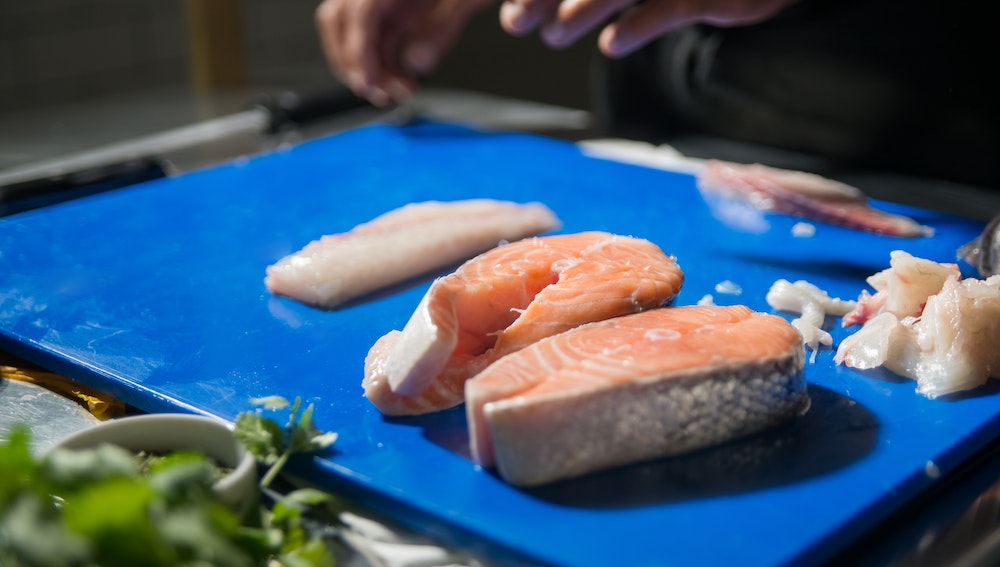
Preparing barracuda for consumption can be an enjoyable experience for those who enjoy eating this unique fish. To begin, it is important to properly handle the fish due to its sharp teeth, which might cause injuries. Have a firm grip on the fish while cutting and filleting.
Before cooking, it is essential to properly fillet and skin the barracuda. Start by making a cut behind the gills, angling towards the head. Carefully remove the skin, working your way from the head to the tail.
Once the skin is removed, proceed to fillet the fish in long, even strokes, ensuring that the flesh remains intact.
Grilled barracuda steaks are a popular choice for cooking this fish. First, cut the fish into thick, even steaks. Season the steaks with your choice of herbs and spices, and leave to marinate for a short while.
Then, preheat the grill and cook the steaks evenly on both sides until they are tender and flaky.
Barracuda can also be prepared as part of stews and soups, where it pairs well with a variety of vegetables. Chop the fish into smaller pieces and add the meat to a pot with aromatic vegetables like onions, carrots, and celery. Allow the ingredients to simmer together, absorbing the flavors of the broth.
Whether grilled or incorporated into stews and soups, barracuda provides a distinct taste when prepared with care and attention to detail.
This versatile fish lends itself to a variety of dishes, making it an interesting and delicious addition to the dining table.
Ciguatera and Barracuda
Barracuda is a predatory fish species found in warm, tropical waters. While some may find its taste appealing, there is a risk associated with consuming it, known as ciguatera poisoning.
Ciguatera is a foodborne illness caused by consuming fish contaminated with toxins produced by dinoflagellates, a type of marine plankton. The most common symptoms of ciguatera poisoning include gastrointestinal and neurological issues, as well as severe pain in some cases.
One reason barracuda is prone to carrying the ciguatera toxin is its position in the food chain. As a large predatory fish, it feeds on smaller reef fish that have ingested the toxic dinoflagellates.
The ciguatera toxin becomes more concentrated as it moves up the food chain, culminating in fish like the barracuda. When humans consume an affected barracuda, the toxin can induce ciguatera fish poisoning.
It is crucial to note that ciguatera poisoning is not the result of improperly cooked or stored fish. The ciguatera toxin is heat-stable, meaning it does not break down during the cooking process.
Therefore, even cooked or frozen barracuda can still pose a risk if consumed. The risk of poisoning may vary depending on the geographic location of the fish and fishing practices.
In some regions, especially those with high incidents of ciguatera poisoning, it is recommended to avoid consuming large predatory fish such as barracuda altogether.
Instead, opting for smaller, non-reef fish may reduce the risk of poisoning. It is always best to seek advice from local experts and fishermen to understand which fish are safe to eat in a particular region.
In conclusion, while barracuda might be a tasty option for some, the potential risk of ciguatera poisoning should not be underestimated.
By taking precautions and staying informed of local fishing conditions, one can mitigate the risk of ciguatera and enjoy a safer seafood experience.
Understanding Mercury Risks
Barracuda, like many predatory fish, can contain high levels of mercury. Mercury is a toxic substance that can accumulate in the tissue of fish over time. Consuming fish with high mercury levels could potentially lead to mercury poisoning, which can have detrimental effects on human health.
To understand the risks associated with mercury in barracuda, it is essential to be informed about the guidelines set by the Environmental Protection Agency (EPA) and other health organizations.
The EPA has established general guidelines for fish consumption, advising individuals to eat a variety of fish but be cautious regarding species with elevated mercury levels. Some barracuda populations have been found to contain mercury concentrations that exceed the EPA’s acceptable limit of 0.3 parts per million (ppm).
Consequently, it’s crucial to know where the barracuda was sourced and the specific mercury levels of that population.
Certain population groups, including pregnant women, nursing mothers, and young children, are particularly vulnerable to the harmful effects of mercury. Ingesting high levels of mercury during pregnancy can affect the baby’s developing nervous system and cognitive abilities.
As a precaution, these at-risk populations are advised to consume lower-mercury fish and avoid fish species with high mercury concentrations.
It’s worthwhile to note that mercury contamination is not distributed equally among all barracuda populations. Regional factors, such as industrial activity and environmental conditions, can influence the amount of mercury found in fish.
Consequently, some regions may have barracuda with lower mercury levels that can be deemed safe to eat. Checking local advisories and reputable sources of information can help identify safe-to-eat barracuda.
In conclusion, understanding the risks associated with mercury in barracuda is vital to making informed decisions about consuming this fish.
By following the EPA recommendations and seeking location-specific information, individuals can better gauge the safety of eating barracuda and the potential health risks.
Sportfishing for Barracuda

Barracuda are an exciting and challenging catch for sportfishing enthusiasts. These fast and aggressive predators can be found in a variety of waters, including reefs, open seas, and shipwrecks. Their impressive speed and powerful strikes make them a sought-after target for anglers.
Catch: To catch a barracuda, fast trolling techniques and appropriate bait are essential. Barracuda are attracted to shiny, fast-moving lures that imitate their natural prey.
Live bait, such as mullet or mackerel, can also be successful when targeting these ferocious fish. Be prepared for explosive strikes and thrilling runs as barracuda are known for their speed and strength.
Sportfish: Due to their aggressive nature, barracuda provide a unique and exhilarating sportfishing experience. Anglers must also handle these fish carefully, as they have sharp teeth that can cause injury.
Proper gear, including wire leaders and stout rods, is essential to successfully land and release these fish.
Bait: The best bait for barracuda fishing includes a combination of artificial lures and live baits. Some popular options for lures are reflective swimbaits, spoons, and flashy trolling plugs.
As for live bait, anglers often have success with mullet, mackerel, and various small fish that inhabit reefs.
Reefs: Barracuda often roam near reefs, making these areas a hot spot for anglers. The structure and abundant food sources provided by reefs attract a variety of fish, including barracuda.
When fishing reefs, be prepared for fast and strong runs as the aggressive barracuda chase and ambush prey. Utilize a combination of trolling and casting techniques to increase your chances of attracting and hooking a trophy barracuda.
In conclusion, sportfishing for barracuda offers a thrilling and challenging experience for anglers. By using the appropriate bait, understanding their behavior in relation to reefs, and being prepared for powerful fights, anglers can make the most of their barracuda fishing adventures.
The Barracuda in the Ecosystem
Barracudas are fierce predators in saltwater ecosystems, predominantly found in tropical and subtropical waters. They play a crucial role in maintaining the balance of the food chain, preying on smaller fish like mullet, jacks, and groupers. This helps to control the population of these species.
As part of their diet, barracudas consume a variety of smaller saltwater fish, providing a rich source of nutrients for these predators. This consumption of various fish species contributes to the nutrient cycling within the aquatic environment.
In turn, barracudas become prey for larger marine animals such as sharks and dolphins, transferring energy and nutrients up the food chain. Additionally, the presence of barracudas can influence the behavior of smaller fish, causing them to seek shelter and develop defense mechanisms to avoid predation.
Humans, too, interact with barracudas in the ecosystem. Recreational and commercial fishermen target these powerful saltwater fish for their size and sport.
However, the consumption of barracuda meat by humans is somewhat contentious due to the potential presence of ciguatera toxin, which may accumulate in the flesh of these predator fish. Cooking barracuda meat does not destroy this toxin, so consuming the raw or cooked flesh poses a risk for humans.
In areas where barracuda populations are stable and unaffected by overfishing, their presence is essential for maintaining the dynamic natural balance of saltwater ecosystems. They help to regulate the populations of various other marine species and contribute to nutrient cycling within the water.
It is essential for humans to ensure sustainable fishing practices to protect barracudas’ vital role in their ecosystems and uphold the health of saltwater environments.
Frequently Asked Questions
Is it safe to consume barracuda?
Yes, it is safe to consume barracuda as long as it is properly sourced and prepared. However, it is essential to be cautious about the risk of ciguatera poisoning, which is associated with consuming fish that feed on toxic algae.
What is the risk of ciguatera poisoning from barracuda?
Ciguatera poisoning is a risk when consuming barracuda, particularly larger specimens caught in tropical and subtropical waters. It is caused by toxins called ciguatoxins, which accumulate in the fish’s tissue and cannot be eliminated by cooking or freezing.
The risk increases with larger, older fish, as they have more time to accumulate the toxin.
How should one prepare and cook barracuda for eating?
To prepare and cook barracuda, first, make sure to buy from a reliable source to minimize the risk of ciguatera poisoning. Clean and fillet the fish, and then marinate it for at least an hour before cooking.
Grilling, baking, and pan-frying are popular ways to cook barracuda; ensure it is cooked through for safety and a tender, flaky texture.
What size of barracuda is ideal for consumption?
Smaller and younger barracudas are ideal for consumption as they have a lower risk of carrying ciguatoxins. Fish measuring 2-3 feet in length are preferable, giving a good balance of flavor and tenderness without compromising safety.
Does the taste of barracuda vary depending on its habitat?
Yes, the taste of barracuda can vary depending on its habitat and diet. Fish from different regions may have slightly different flavors and textures.
Traditionally, barracudas caught in cooler water are considered better tasting, while those from warmer waters may have a stronger, fishier taste.
Is including barracuda in one’s diet a healthy choice?
Barracuda is a healthy choice when included as part of a balanced diet. It is a lean, protein-rich fish with ample minerals, vitamins, and omega-3 fatty acids.
However, due to the risk of ciguatera poisoning, it is crucial to source and prepare the fish correctly and consume it in moderation.



